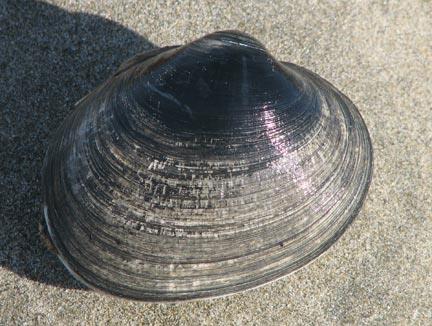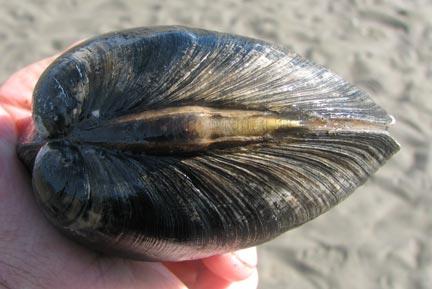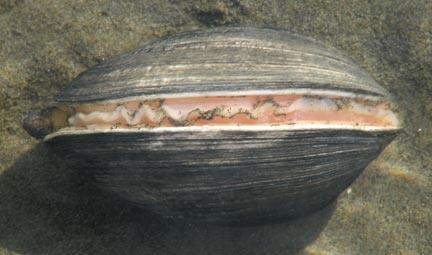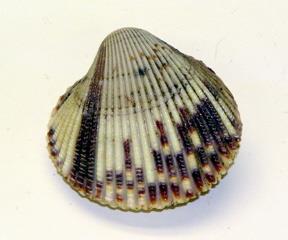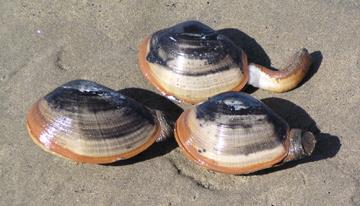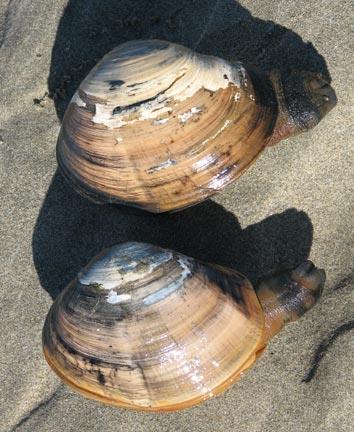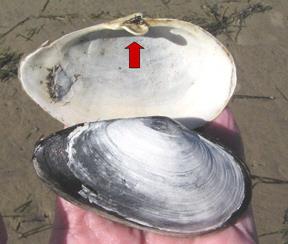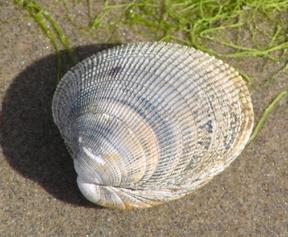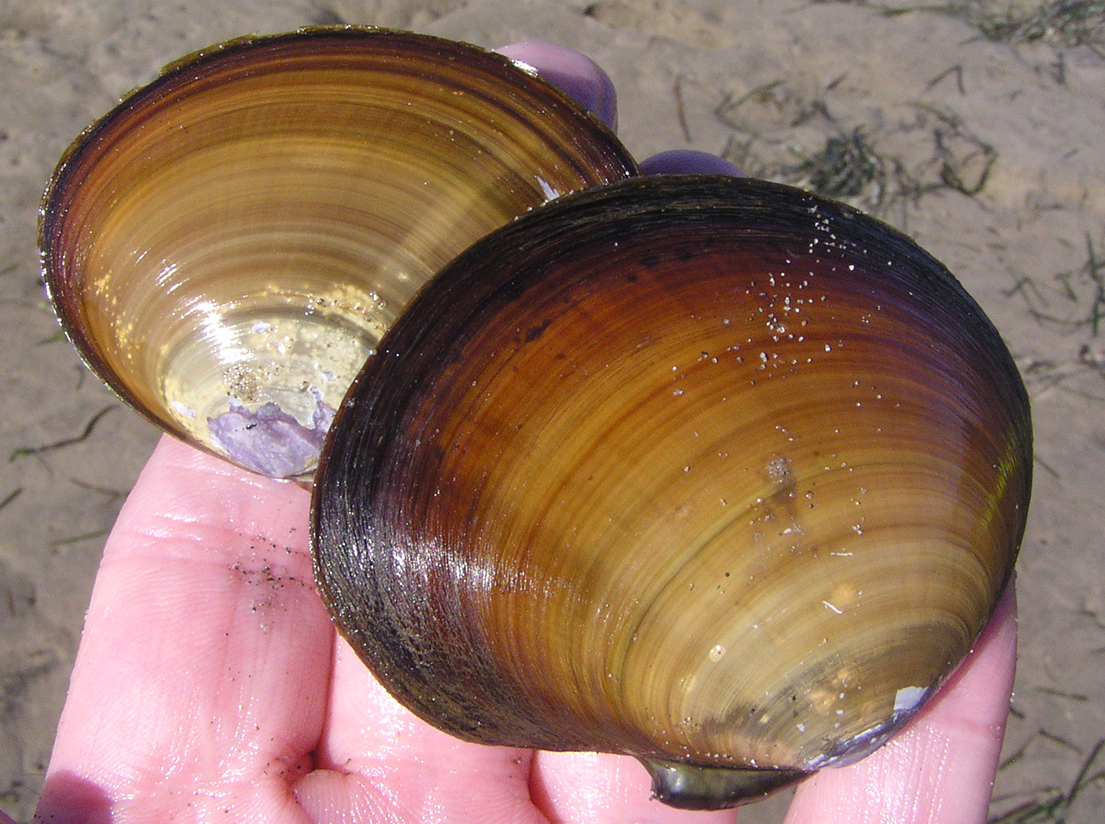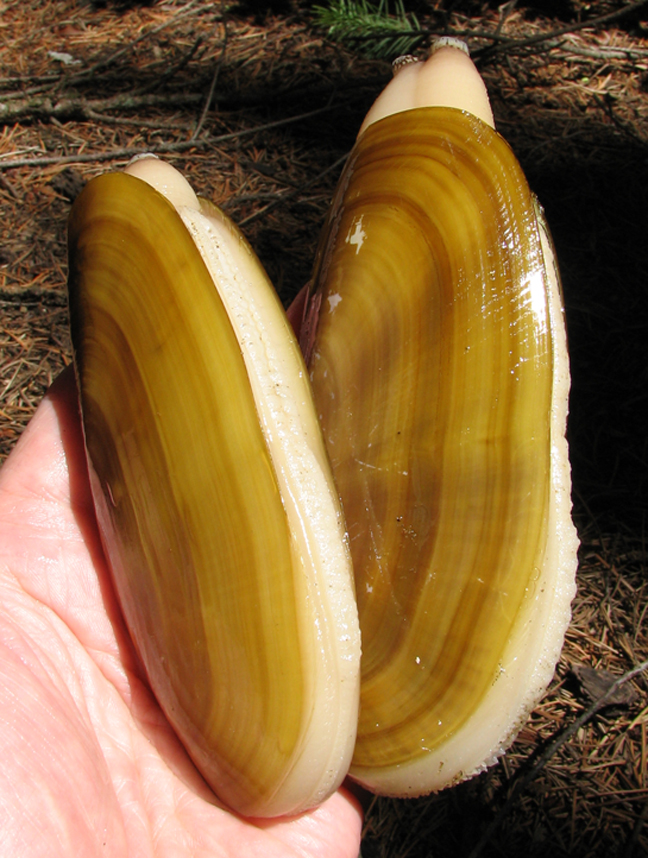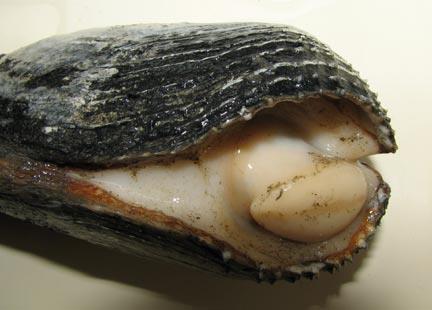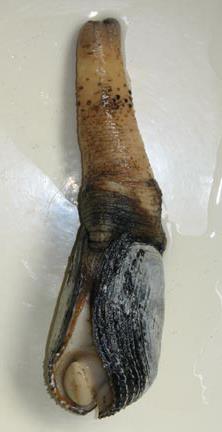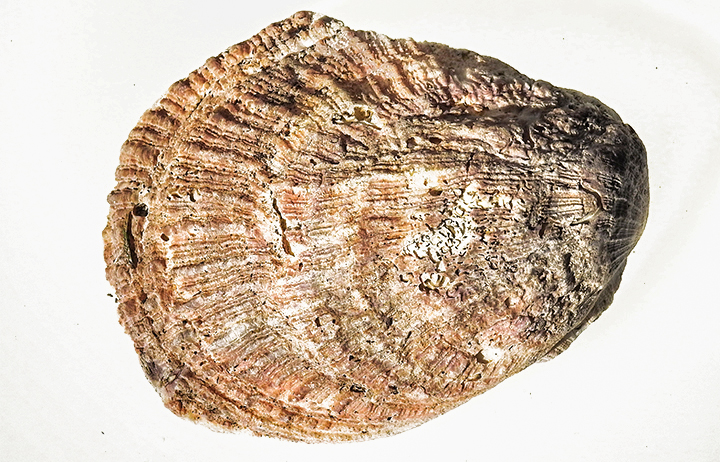The Pacific Gaper Clam (Tresus nuttallii) is the largest and deepest burrowing clam in the bay. Also called the horse clam, it can reach eight inches long and burrow down to three or more feet. Its shell, when not stained, is creamy white and partly covered with a brown varnish-like chitinoid coating called a periostracum. The two shells gape on the posterior end where the neck protrudes, hence its common name. The clam can also be identified by the internal hinge ligament that fits into a pair of spoon-shaped depressions in the shells called chondrophores. The large neck, the meatiest part of the clam, has fused incurrent and excurent siphons and is sheathed with part of the periostracum. The tip of the neck bears two hard, leathery plates. These gaper clams are found in various parts of the bay, usually clustered in sandy sediments. The neck hole is an inch or more across, and if you stick in your finger, you can feel the hard plates just before the siphons is retracted. You may also get hit with a jet of water that is expelled when the clam is disturbed. When digging for the clam, be careful not to break the fragile shells. The neck, after tenderizing, is good fried or in chowder, but should be dipped in boiling water first to aid in removing the periostracum. The leathery plates can be clipped off. When cleaning the clam, you will likely find one of three species of commensal (or parasitic) pea crabs, Pinnixa faba, Pinnixa littoralis, or Fabia subquadrata in the mantle cavity. They also inhabit other clams.
Another gaper clam, the Fat Gaper (Tresus capax), with a rounder more robust shell, also occurs in the bay, but is not as common. The tip of its siphon does not have the hard, leathery plates. Its shells, probably from offshore populations, are commonly washed up on the beaches outside the bay.
